Affiliate links on Android Authority may earn us a commission. Learn more.
Sony Xperia Z1 Compact Review
Published onMarch 6, 2014
It seems the companies have figured it out – smaller form factors aren’t a fringe product but are in very real demand. But “mini” versions of flagships tend to lose some of what make their bigger siblings appealing in the first place, unfortunately. Sony, though, appears ever aspirational in its quest for greater consumer loyalty and market share, and wanted to buck that trend with a “compact” offering that literally just shrinks down their best device.
Related: The best Sony Xperia Z1 Compact cases.
Pros
- Best in class performance
- Fantastic 20.7 Megapixel camera
- strong battery life
- Water resistant, dust proof, and very durable device
- Best compact phone on the market with no compromise
Cons
- Bezels are a tad thick
- Could fit a larger display in same form factor
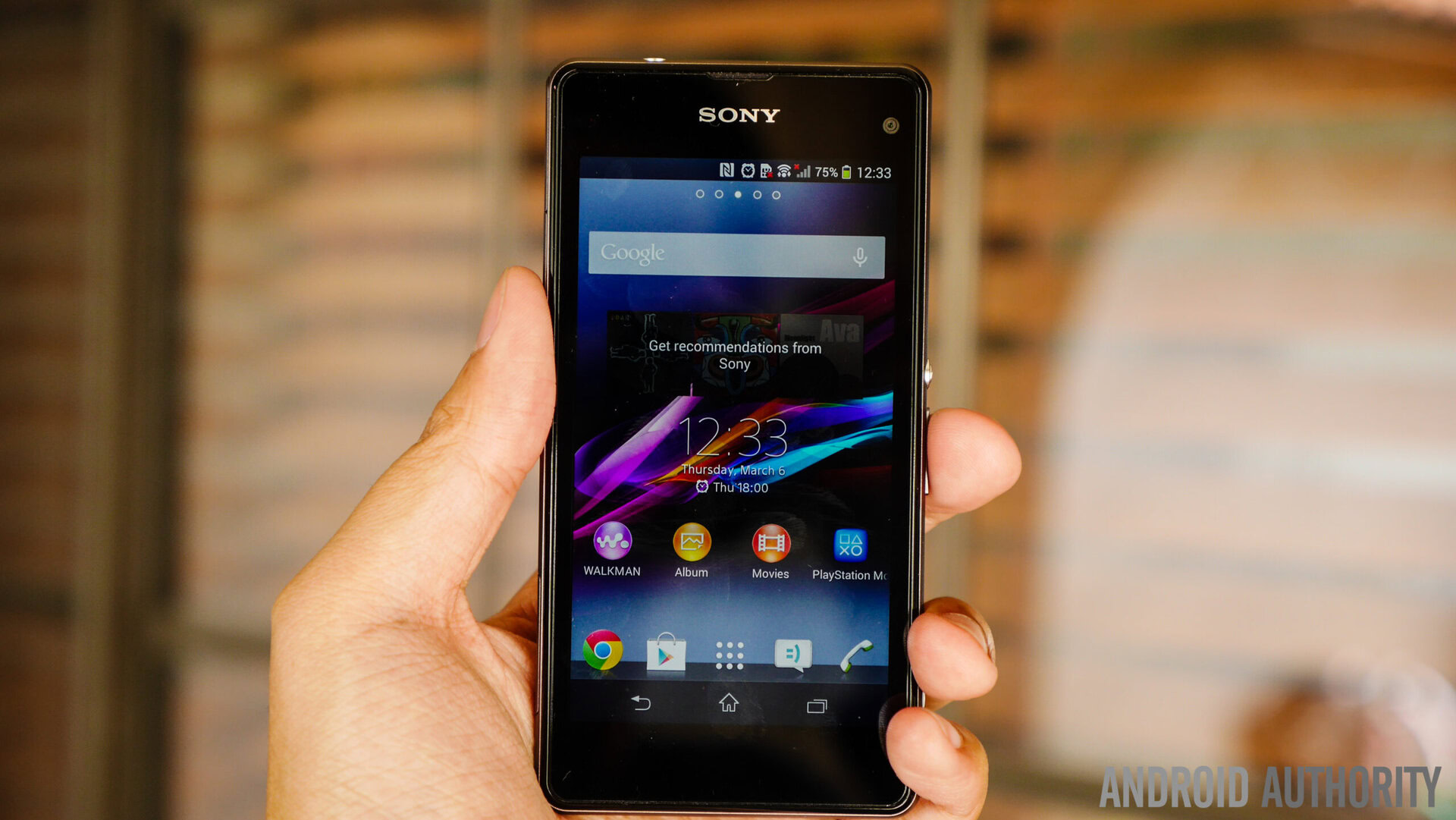
In an attempt at creating a best in class device that offers little to no compromise over its larger, and equally powerful older sibling, the Sony Xperia Z1, Sony brings us the Xperia Z1 Compact. Is the Z1 Compact the accessibly sized phone that we’ve all been waiting for? You can find out in our review.
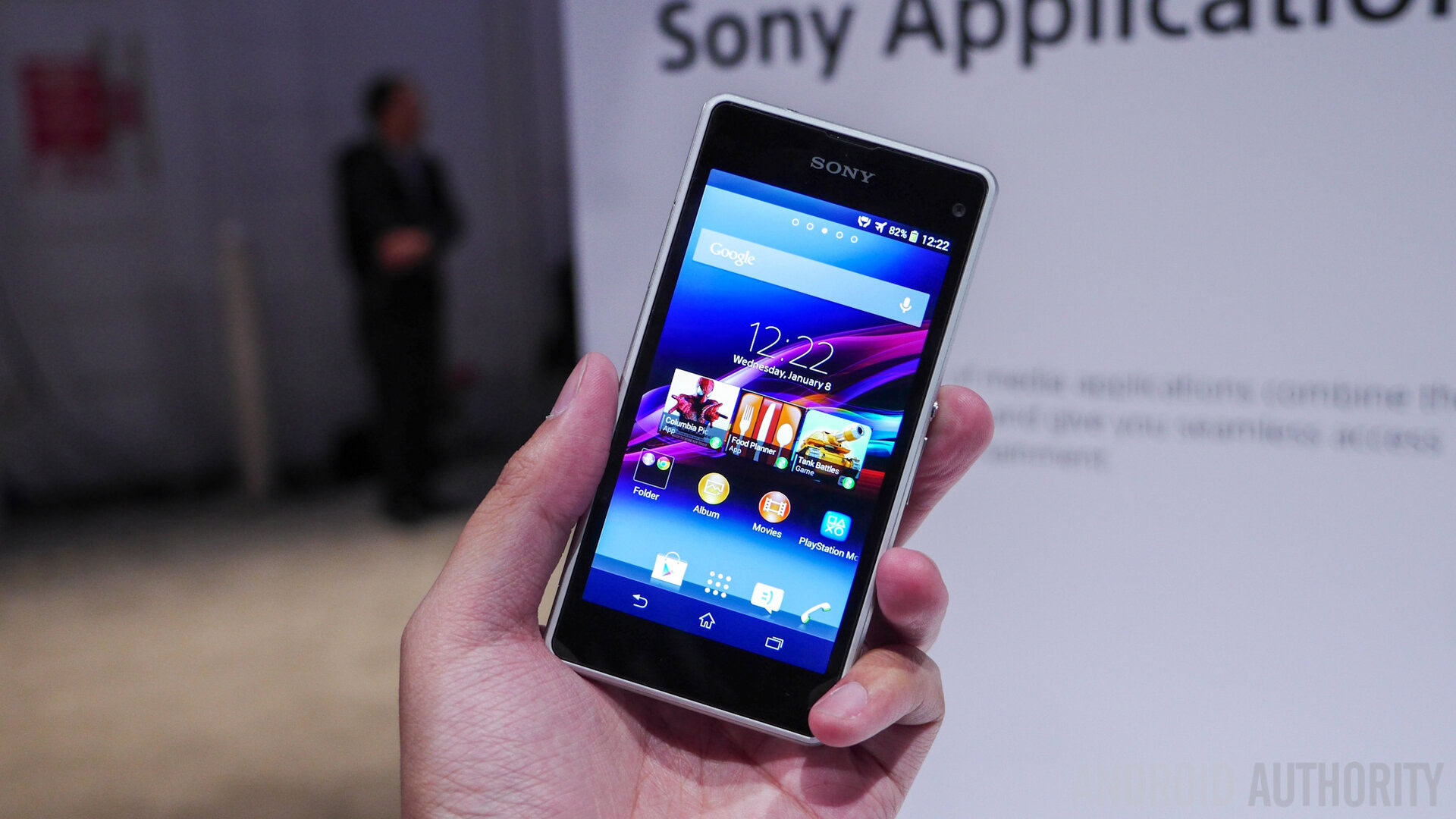
Sony took the shrink ray to the Xperia Z1 and brought everything down to size. The glass finish with an aluminum frame takes the premium look and feel that only Sony really puts out consistently, and brings it to a smaller, easier to handle form factor. It’s clever of them to identify an opportunity in the market in a way that seemingly no other manufacturer has, except for Apple. While smaller form factors remain popular in certain parts of the world, big 4.7-inch+ devices have become the norm, alienating huge swaths of people not used to negotiating seemingly gargantuan devices.
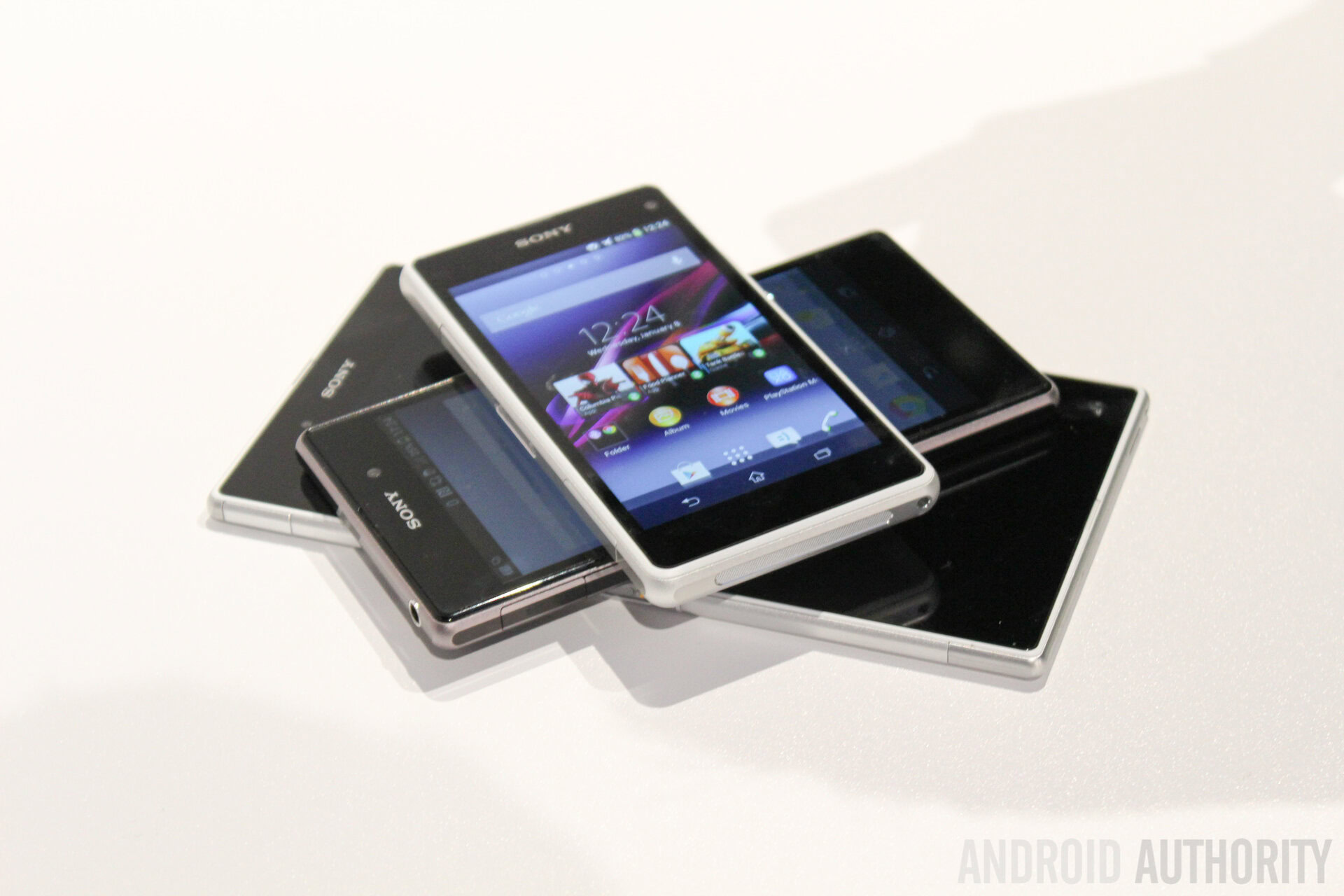
And, without a doubt, while bigger devices the the Samsung Galaxy Note 3, LG G2, and even the Nexus 5 are certainly appreciated, the fact remains that not everyone wants a big device. Not everyone has large hands, and not everyone has access to both their hands at a time – something often demanded by anything with a display larger than 5 inches,
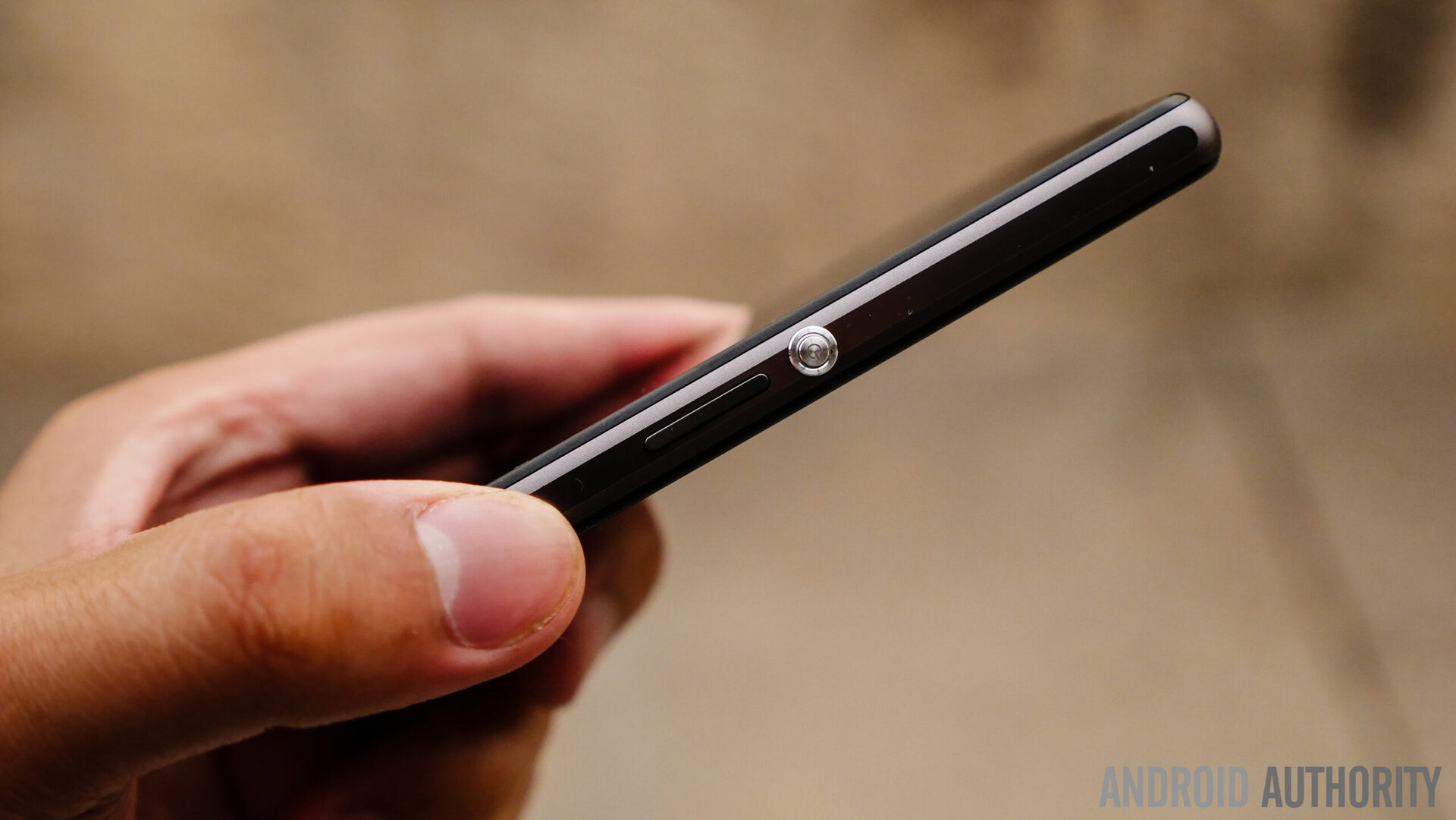
Button layout takes on the now classic Sony motif, as the big silver power button, the volume rocker, and the dedicated camera shutter button are on the right side. One problem we must mention here is that the camera button is a little hard to press, as it is really small and slim – it might be just a little difficult to easily snap a picture with it.
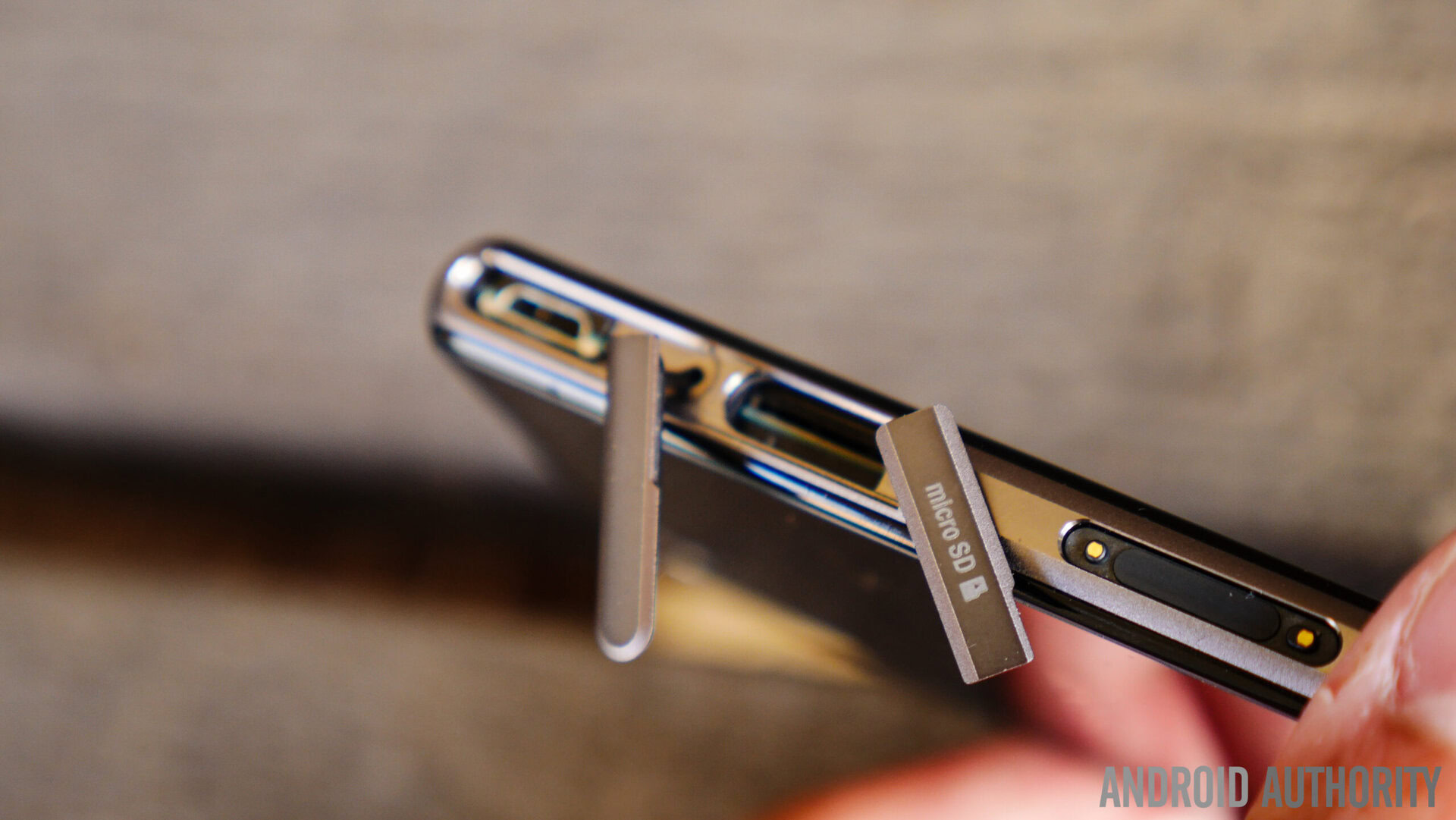
The left side of the phone has the microUSB charging port, the microSD card slot, and the SIM tray covered with pieces of plastic, telltale signs of the phone’s resistance to water and dust.
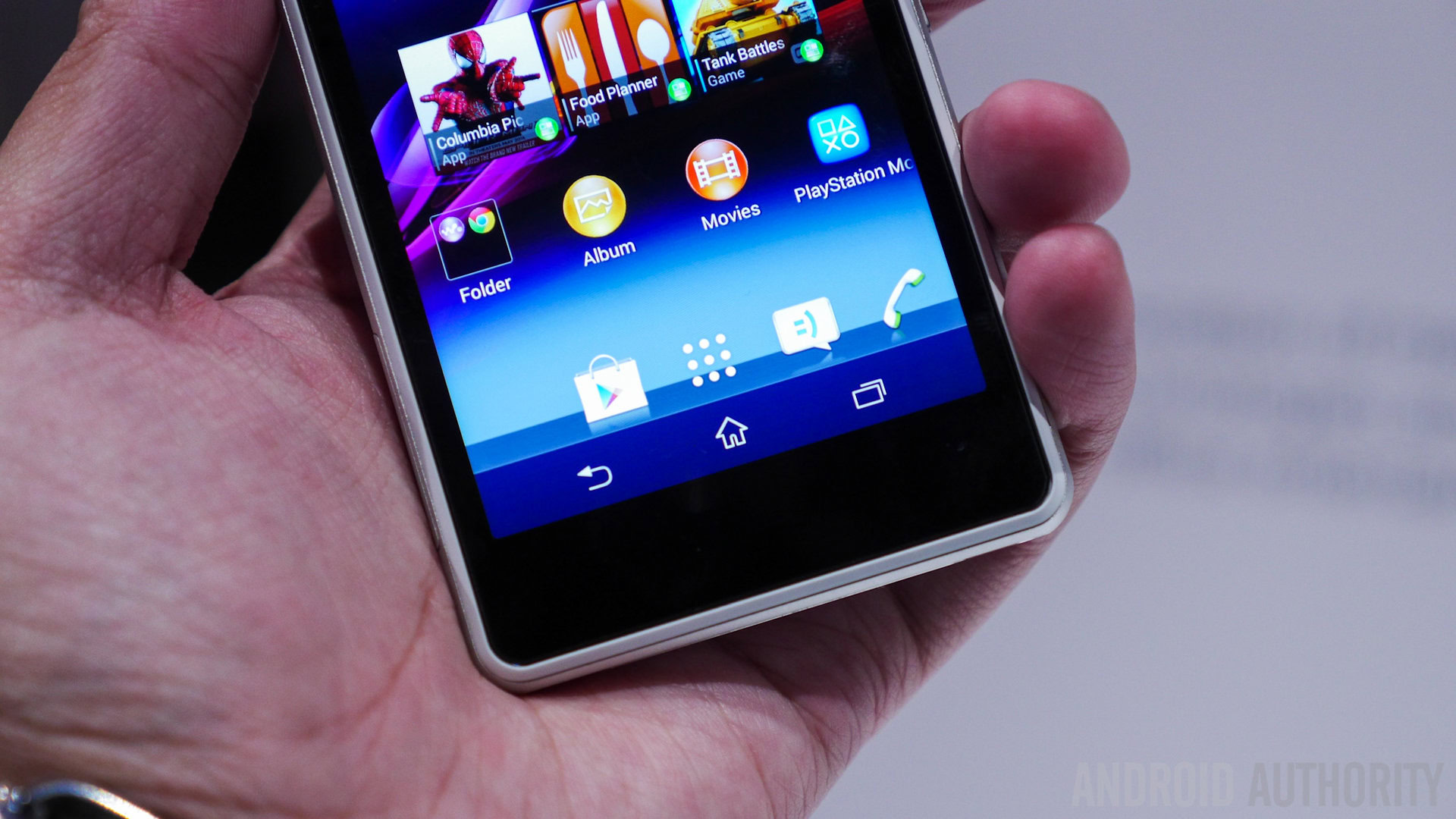
Of course, the main story here is the smaller size and how easy it makes this phone to maneuver. The 4.3-inch display is surrounded by the rather thick bezels that Sony is known to employ, but, overall, the device is still in a pretty reasonable size, not too big and not too small.
The smaller size works wonders in some cases – one particularly great experience I had was with typing – the already pretty great stock Sony keyboard allows for easy swipe typing, and its small size makes one-handed use a breeze.
Bottom line, this is a refreshingly easy phone to work with.
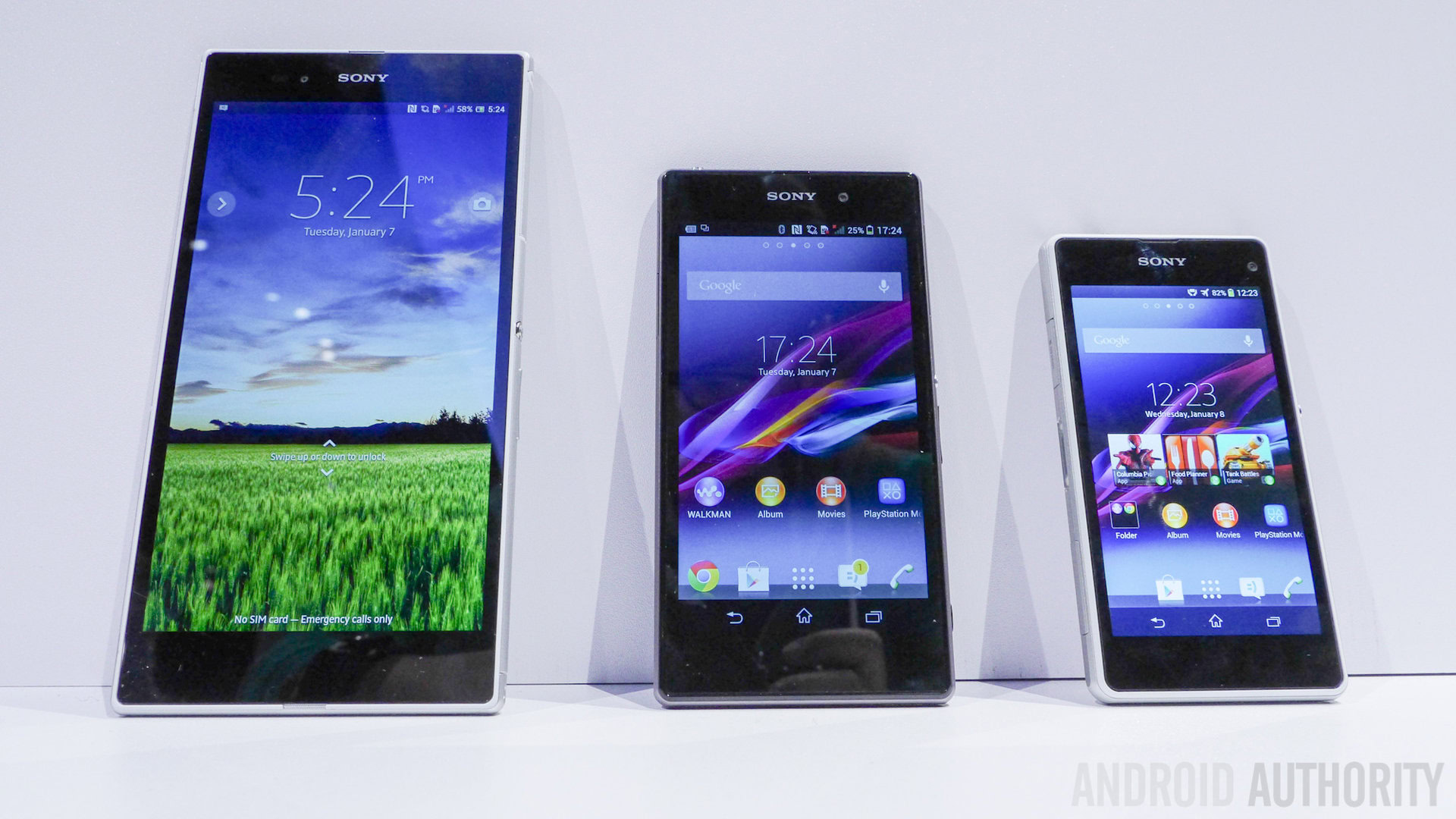
From left to right: Siblings Sony Xperia Z Ultra, Sony Xperia Z1, Sony Xperia Z1 Compact
The 4.3-inch TFT LCD display on the Xperia Z1 Compact packs 720p resolution, which is a specification that flagship Android devices were rocking back in 2012. Does that mean the Compact is inadequate? Not really.
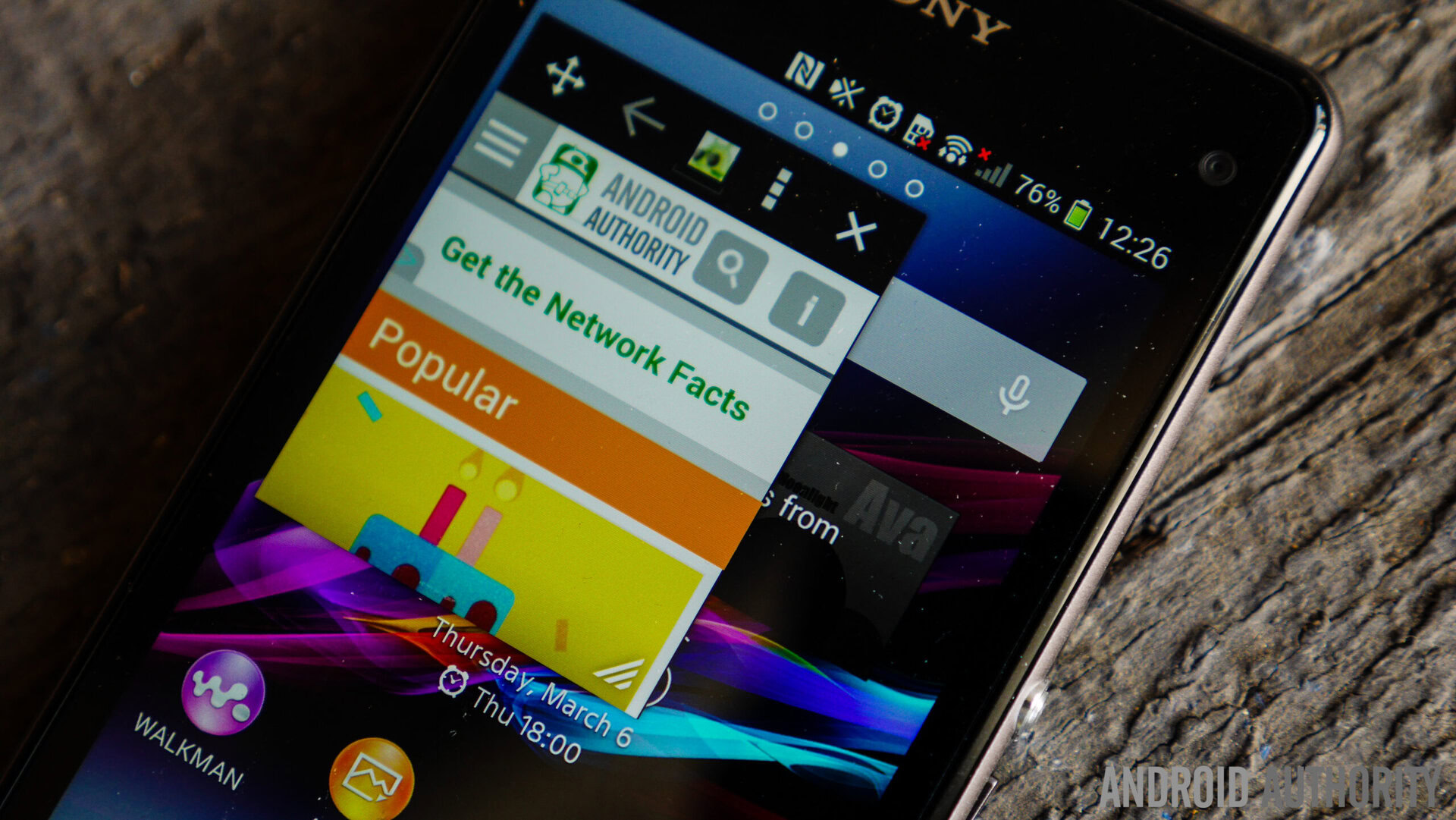
At a density of 342 ppi, the Z1 Compact can’t match the 440+ ppi screens of 1080p devices like the Galaxy S5 or HTCOne, but it’s still above the threshold of 320 ppi at which pixels no longer resolve for a person with normal vision. In other words, 720p is more than enough on a display this size.
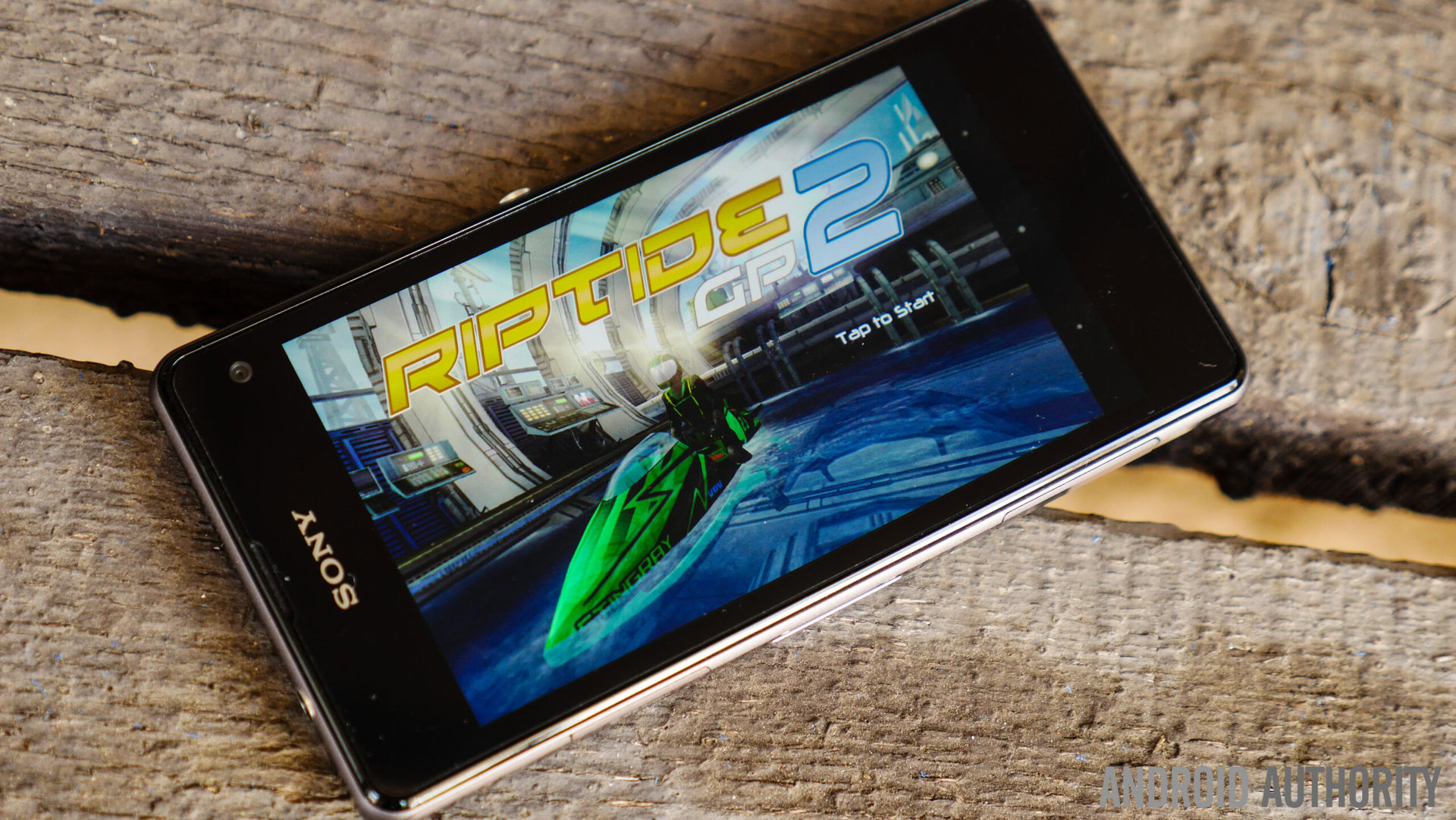
Color rendering on the Z1 Compact is excellent, thanks in part to Sony’s homegrown display technologies, Triluminos and X-Reality. The former means that the display uses quantum dots to render colors, which put simply, makes it possible for the display to show colors that exceed the typical vividness of LCD. It’s not quite AMOLED level of color intensity, but it’s a notch above what you get on most LCDs. X-Reality means that the phone processes images and videos on the fly to make them look at their best. It’s not a stretch to say that the Z1 Compact looks a bit like a very tiny Sony TV thanks to these technologies.
A display may have the nicest colors, but it’s all for nothing if bad viewing angles spoil everything. Luckily, the Z1 Compact is clearly better in this area than earlier devices in the Xperia Z series.
In a few cases, we noticed that apps don’t adapt well to the smaller size of the display, but overall this relatively small screen performs very well.
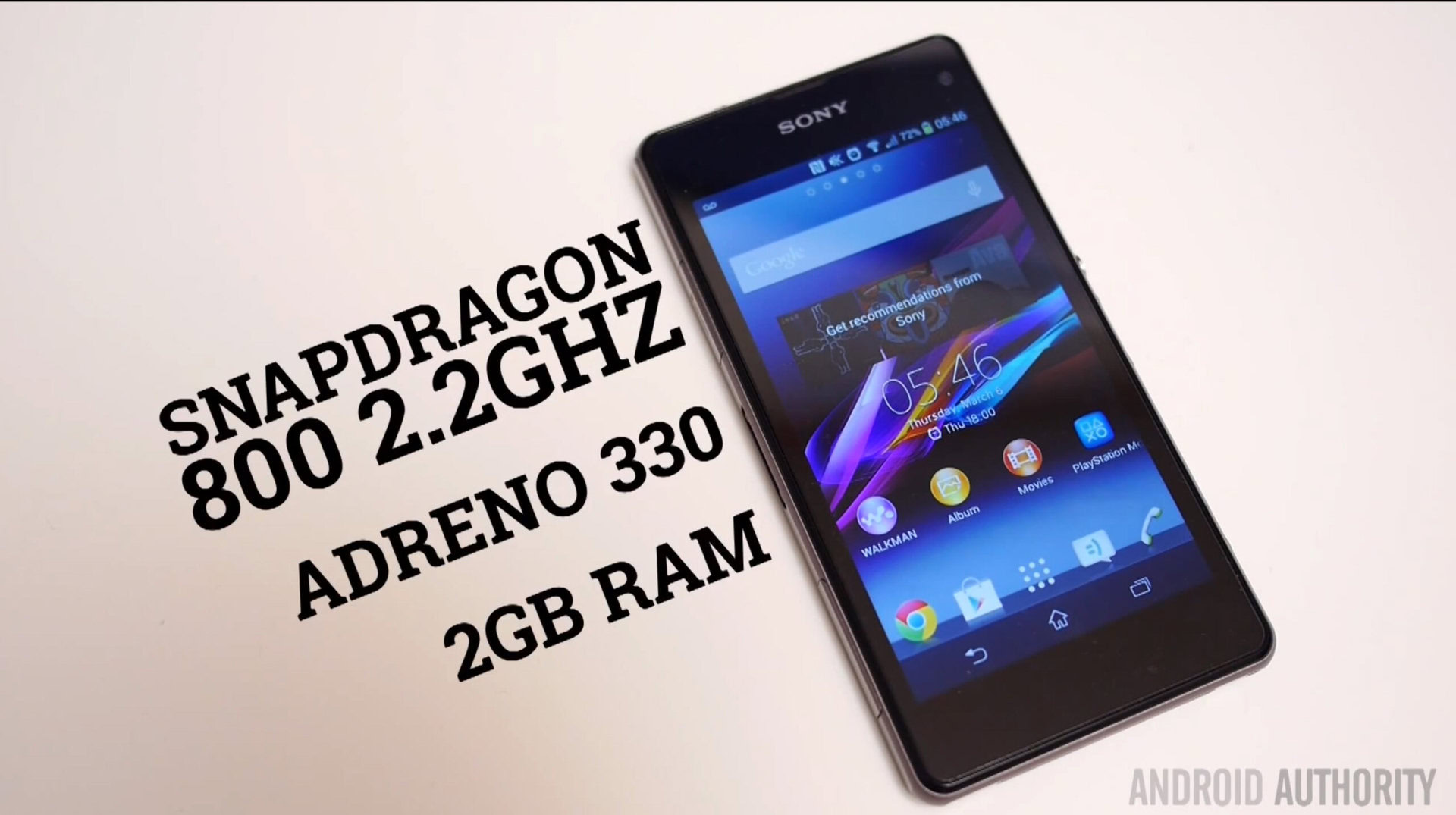
Unlike some competitors, Sony did not compromise in the power department with the Z1 Compact. There are no compromises affecting the user experience, which is a refreshing change. Quite literally, Sony took the high powered processing package of the Z1 and put it into the Compact. That means a Snapdragon 800 with a quad-core CPU clocked at 2.2GHz, backed by the Adreno 330 GPU and 2GB of RAM. Technically, there are some more powerful configurations on the market, but in terms of actual experience, this little ball of lighting is among the best.
It helps that Sony uses a minimalistic user interface without many processing-intensive flourishes. But even in power-hungry applications, the Xperia Z1 Compact chugs along without nary a hiccup. In Riptide GP2, for instance, we smoothly cut through the waves even at the highest settings.
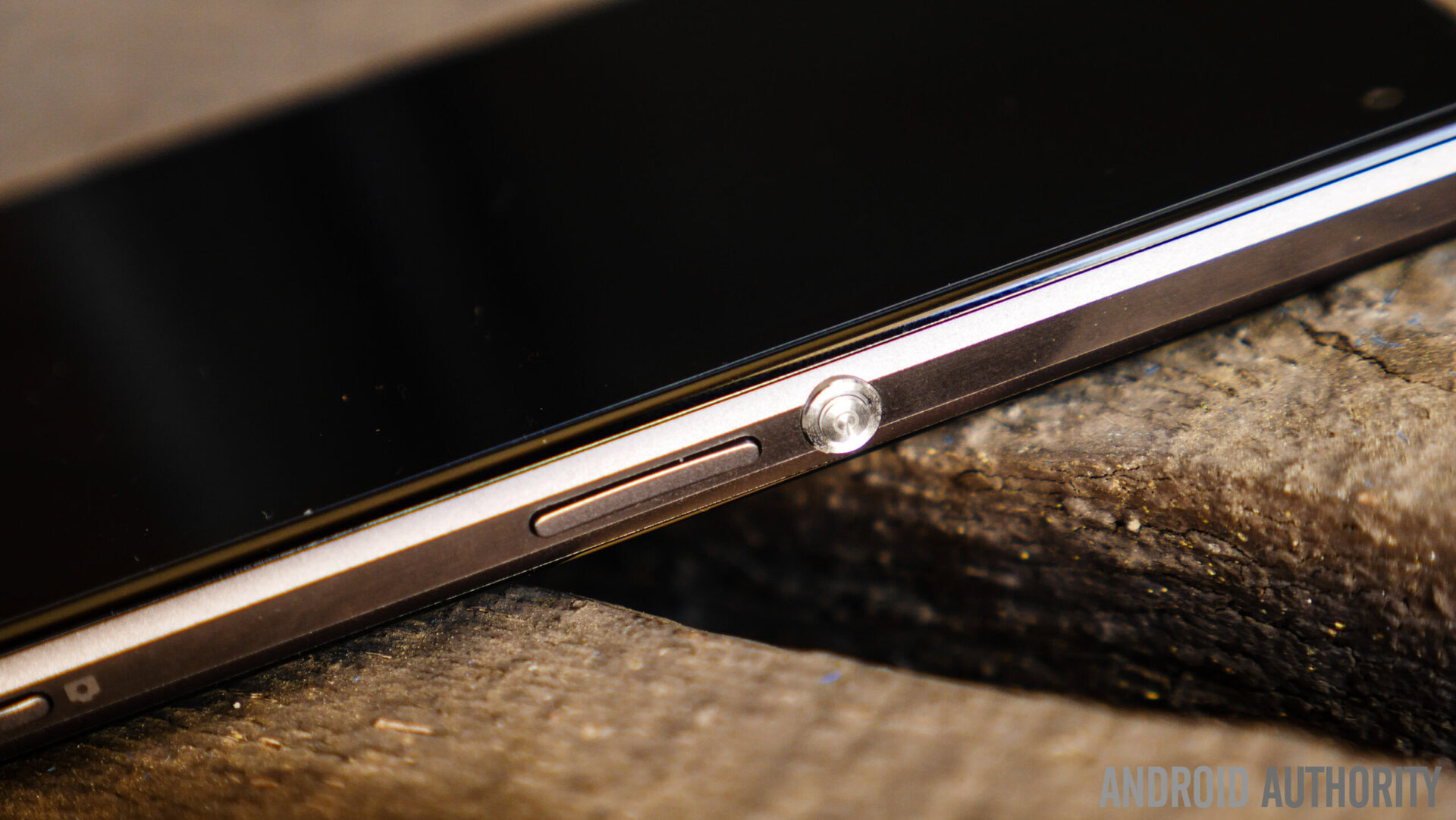
If you’re familiar – and happy – with the hardware features of the Sony Xperia Z1, you’ll feel right at home on its diminutive sibling. That starts with the 16GB of onboard storage and the presence of the microSD card slot that lets you bolster storage with an additional 64GB. All the sensors and connectivity features make the jump as well.
Shrinking down the Xperia Z1 did result in some tradeoffs though. The speaker on the bottom of the device might seem capable due to its size, but the sound it outputs is nowhere near what we’d like in terms of volume and richness. Call quality from the phone speaker, however, is entirely satisfactory. The same can be said about the cell connectivity on T-Mobile’s LTE, both for voice and data.
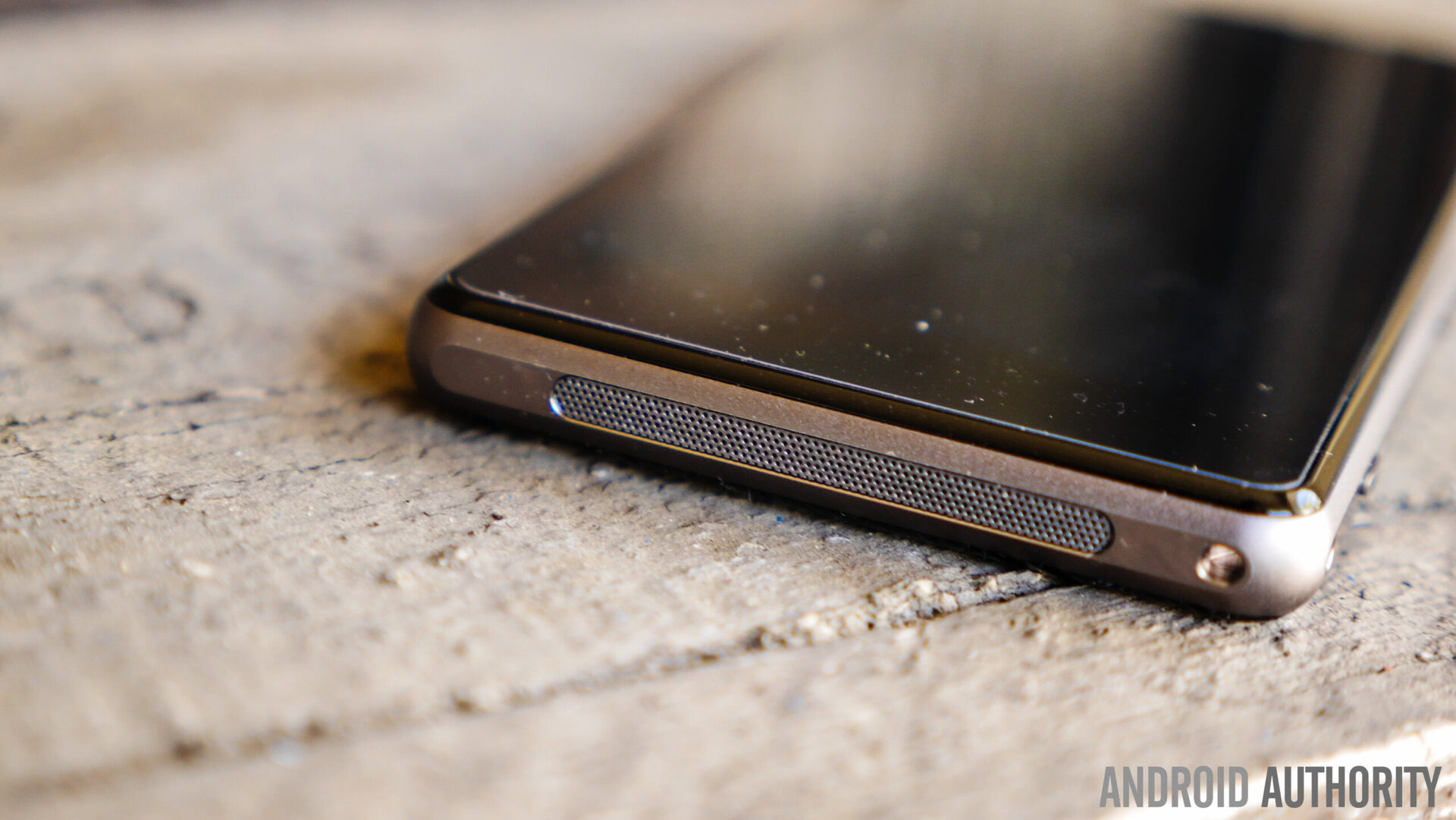
The battery clocks in at 2,300 mAh, a nominal drop from the capacity of the Z1, but one that Sony could not avoid. Even so, we were pleasantly surprised by the stamina of this little guy, as it consistently got us through a day of pretty heavy usage. And that’s without activating all of Sony’s power saving features.
Somehow odd, there’s an USB OTG cable bundled with the device, making us wonder why Sony chose to offer it on the Z1 Compact, and not on its larger devices.
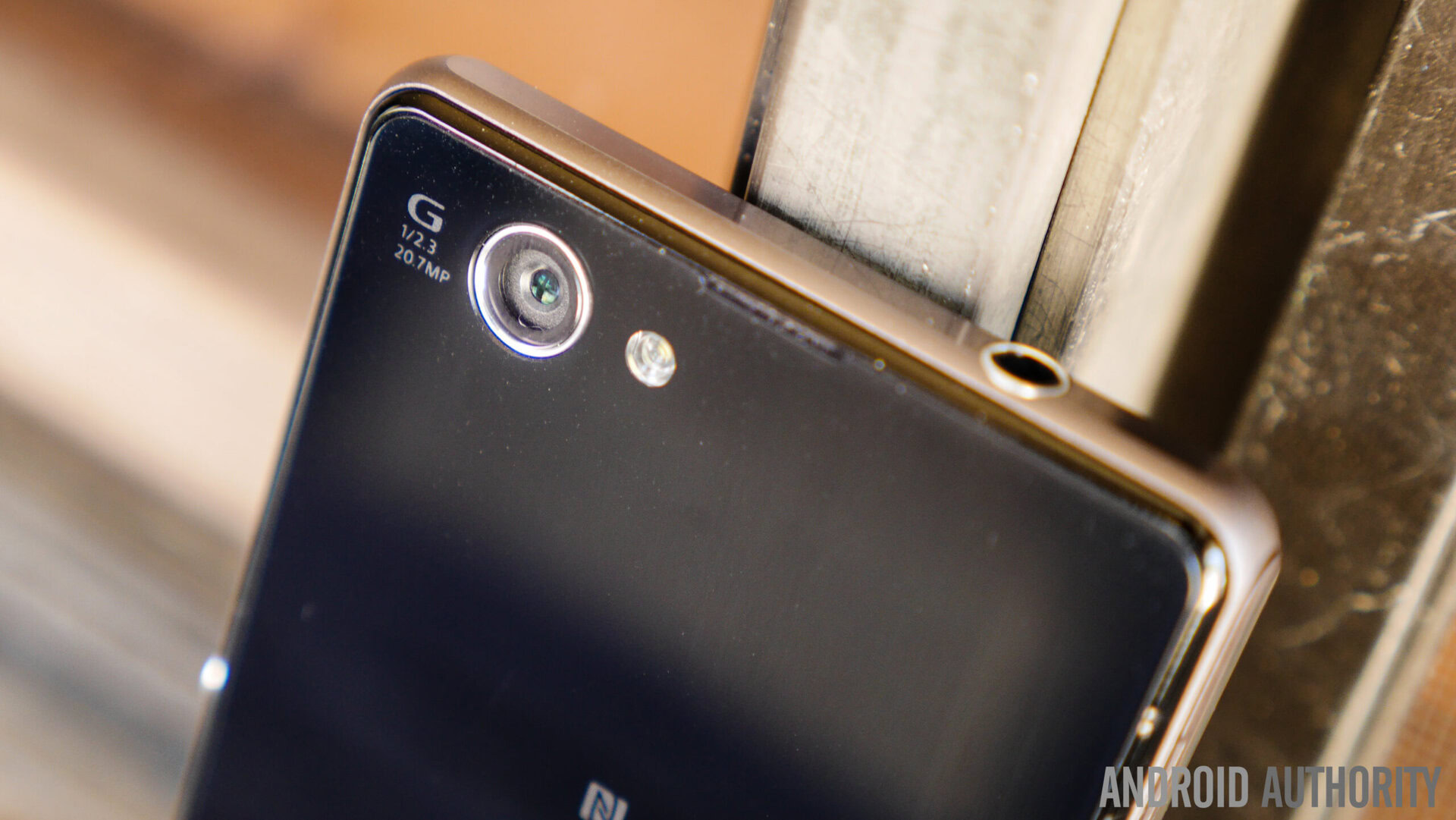
Small as it may be, the Xperia Z1 Compact packs an impressive camera, the same shooter that got everyone talking when the Xperia Z1launched last fall. You get the same 20.7MP Sony Exmor RS sensor, but know that, if you want to shoot in the 16:9 format, you will have to make do with 8MP resolution. Images taken in Sony’s well known Superior Auto mode (which is supposed to adapt to the scene and pick the best settings for you) shoots in 8MP. The image samples below have been taken in this mode.Besides the high-resolution sensor, there’s G Lens camera optics, which are supposed to be Sony’s best quality lenses, equivalent with the famed Carl ZEISS lenses.
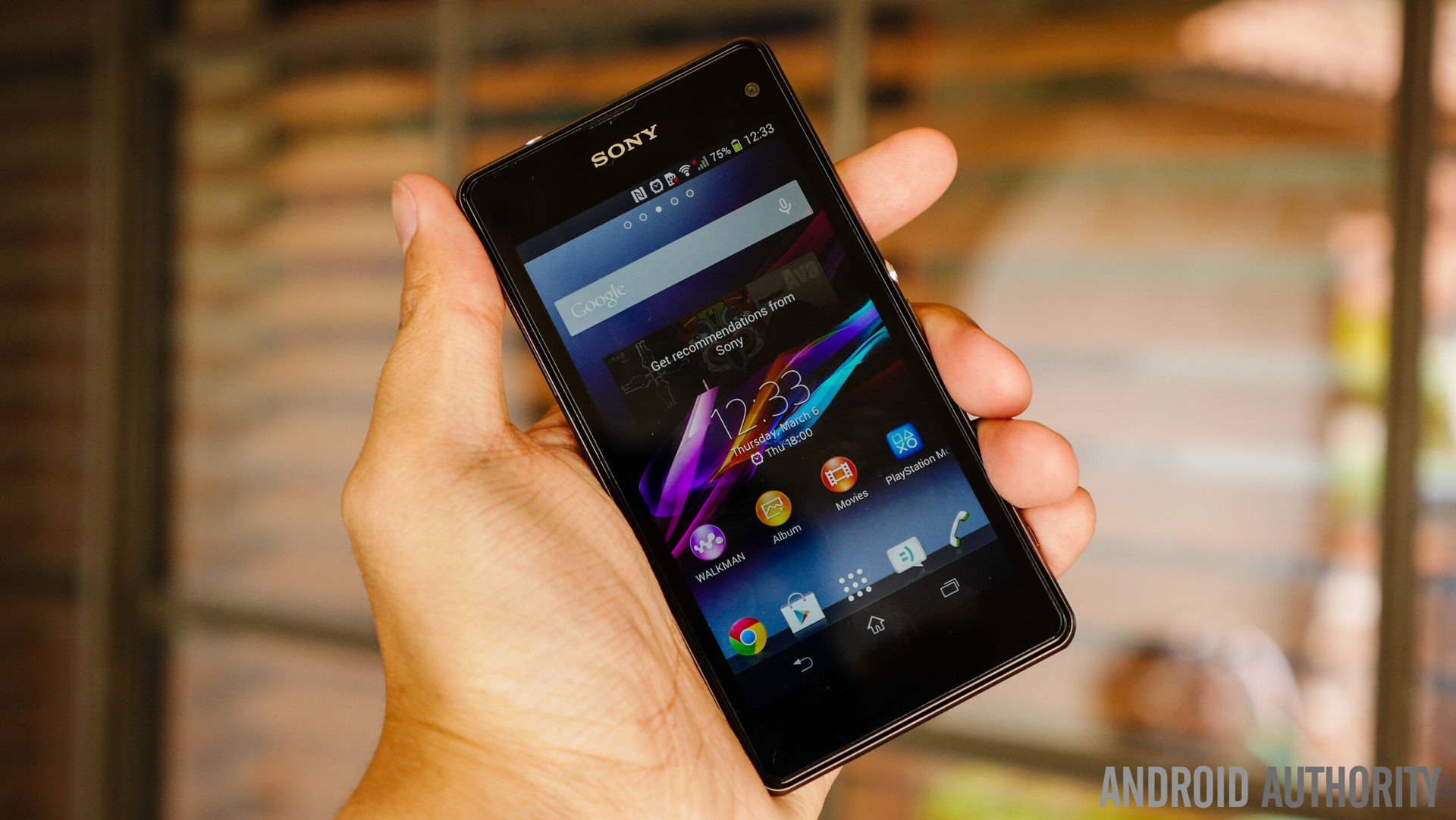
Finally, in software, there’s not that much to say about Sony’s Timescape UI on the Xperia Z1 Compact, but that’s not that bad as it sounds. Instead of gimmicks and design flourishes, Sony offers simplicity and refinement, without moving to far away from the stock Android experience.
Sony’s take on Android keeps the homescreens simple, while the app drawer only features the addition of a quick pullover on the left for some extra options. The notification dropdown comes with a very simple power widget, and that’s about it.
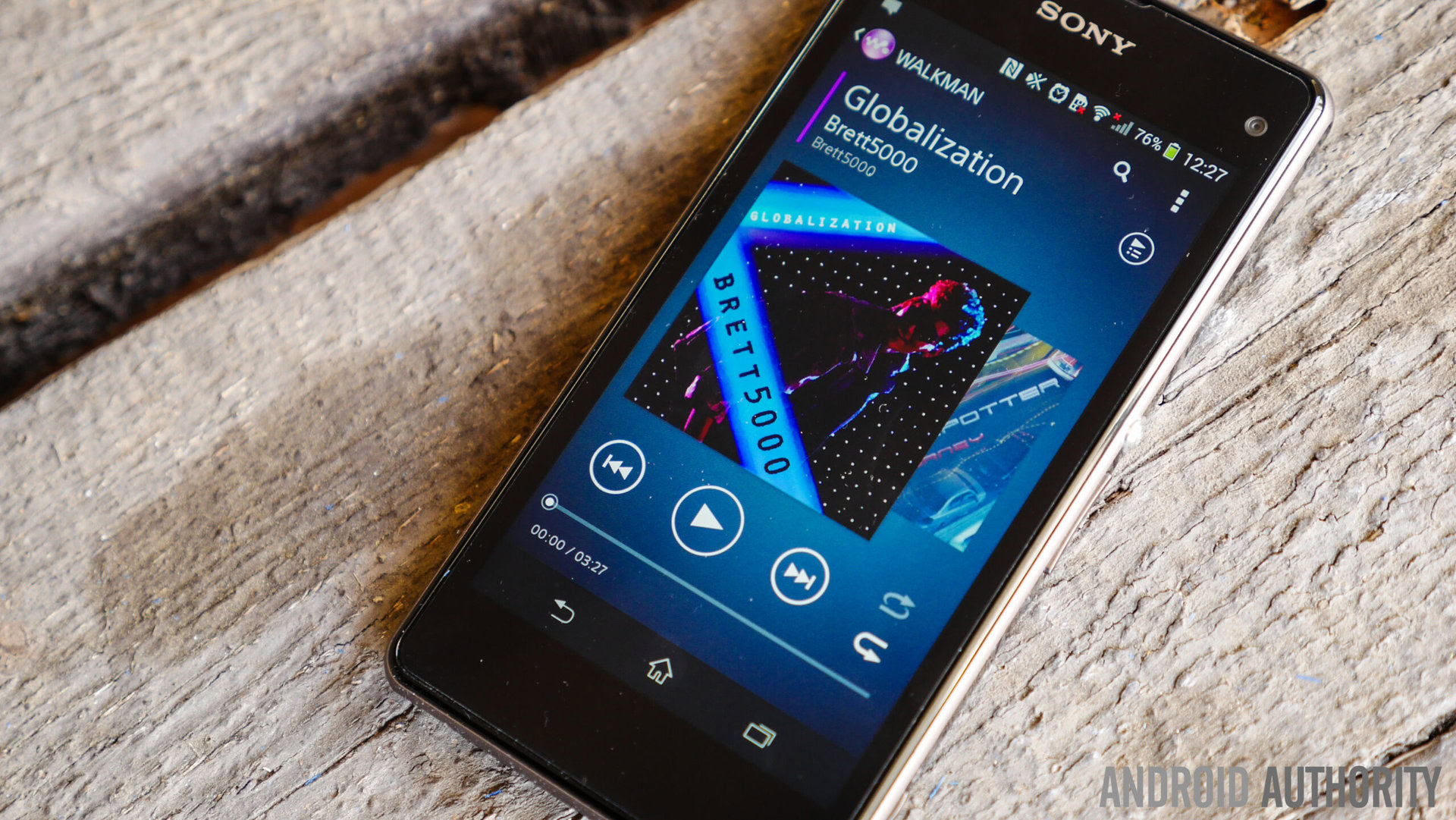
Offerings like Walkman and Album remind us about Sony’s prestigious media offerings, even if they double the functionality of Google’s apps. We can’t forget about the small apps, small utilities that help with multitasking that can be accessed from the recent apps area.
Sony introduced many new software features on the KitKat-running Xperia Z2, and we expect at least some of them to transition to the Z1 Compact. When that happens, we will revisit this review.
As we’ve said so many times here in this review in so many different ways, the Sony Xperia Z1 Compact is the smallest, most powerful device on the block ;a device with little to no compromise.While some would decry the bezel slightly thicker than it has to be, it’s likely that those voices will be silenced when comes time for the device to accidentally be dropped. Sony leads the pack in terms of durability and design construction. Often this comes at a price, wherein bezels are slightly thicker than industry leading peers like Samsung or LG. But those very same devices made by competing manufacturers are that much less likely to hold up to the accidental wear and tear that real humans subject their devices to. Regardless, here’s the specs of this little ball of fire below.
| Display | 4.3-inch Triluminos IPS display with 720p resolution, 341 ppi |
|---|---|
Processor | 2.2 Ghz quad-core Qualcomm Snapdragon 800 processor |
RAM | 2 GB |
Storage | 16 GB, expandable via microSD |
Battery | 2,300 mAh |
Cameras | 20.7 MP rear camera with Sony G Lens and Bionz mobile 2 MP front camera |
Connectivity | WLAN (2.4/5Ghz) a/b/g/n/ac, NFC, A-GPS+GLONASS, microUSB 2.0 (MHL), BlueTooth 4.0 LE |
OS | Android 4.3 Jelly Bean, planned upgrade to Android 4.4 Kitkat |
Dimensions | 127 x 64.9 x 9.5 mm, 137g |
Smaller phones these days tend to be what we like to call everyman and everywoman devices, in the sense that they are affordable. That’s not the case, which lives up to its flagship aspirations when it comes to its price – $570 unlocked on Amazon. But for what you are getting, it’s well worth it. A blazing fast, water resistant, durable device with incredible image taking abilities that will likely last you for years to come.
Indeed, the Xperia Z1 Compact is a no compromise device, in its quality, features, but also its price tag. If you are looking for a smaller device than the current crop of high-end Android devices, the Z1 Compact sure is the best phone you can get, albeit at a price tag that you don’t see elsewhere in this segment.
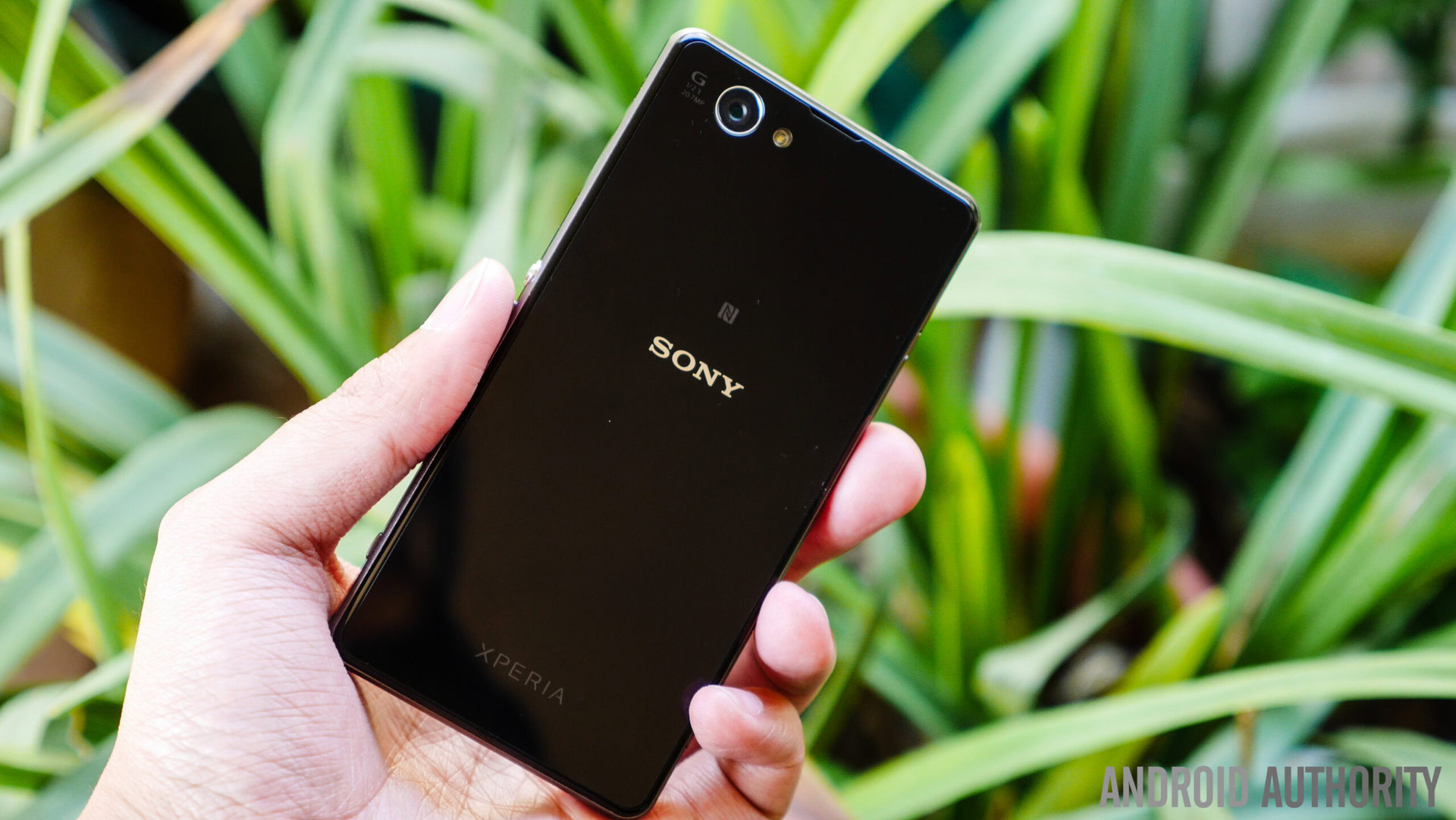
Sony undoubtedly created a little ball of lightning here and it’s one hell of a device. It might not stand alone in the smaller device space, but once you get your hands on it, it sure might feel like it does.
Let us know what you think of Sony’s Xperia line of devices, and of the Z1 Compact! We always love hearing from you.